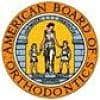The American Association of Orthodontists Foundation (AAOF) has created a new research award in honor of the late Charles Burstone, DDS, MS. The Burstone-Indiana BioMechanics Award will fund future study of the field of biomechanics and other emerging technologies.
According to the AAOF, Burstone was a pioneer in the study of biomechanics and orthodontics. He believed that the collective study of physics, mechanics, and engineering was essential to optimal and more predictable orthodontic outcomes for patients.
“He brought the full force of scientific knowledge back to orthodontics,” said Michael Marcotte, DDS, MS, a long time teaching colleague and close friend. “Dr Burstone is best known for the ‘segmented arch technique,’ which calls for the movement of teeth in small groups, rather than individual teeth. This technique is extremely quantifiable, manageable, and predictable,” adds Marcotte.
The Burstone-Indiana BioMechanics Award was made possible through the shared contributions of some of Burstone’s professional colleagues, friends, and admirers, including orthodontists:
· Chris Chang, DDS, PhD (Taiwan)
· Charles Coghlan, DDS, MSD (GLAO/IN)
· Gene Dellinger, DDS, MSD (GLAO/IN)
· Michael Marcotte, DDS, MSD (NESO/CT)
· Anthony Puntillo, DDS, MSD (GLAO/IN)
· Charles Simons, DDS, MSD (GLAO/IN)
· Rodrigo Viecilli, DDS, PhD (PCSO/CA)
Eugene Roberts, DDS, PhD, DHC, was a student and long-time colleague of Burstone’s at Indiana University’s School of Dentistry and was instrumental in organizing the fundraising for this award. “Indiana University has been unique in the history of orthodontics. Under the guidance of Dr Burstone, orthodontics and mechanical engineering were brilliantly fused to help students understand the physics of how teeth move,” says Roberts.
“Supporting scientific biomechanics, represented by simultaneous integration of physical and biological sciences into orthodontics, is the best way I can think of to keep Dr Burstone’s legacy alive,” says Viecilli. Simons agrees and looks toward the future, “Wonderful scientific minds can be nurtured with these funds.”









